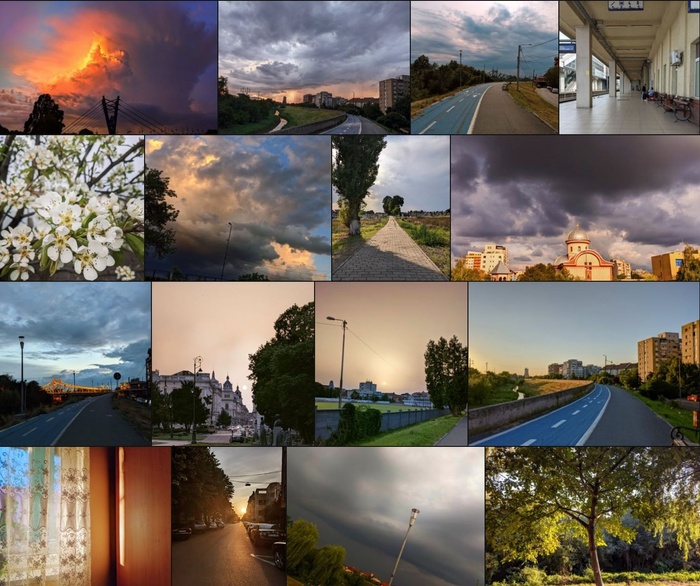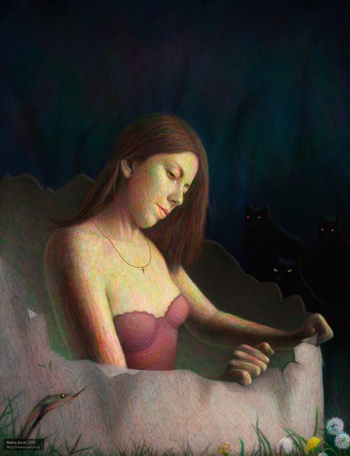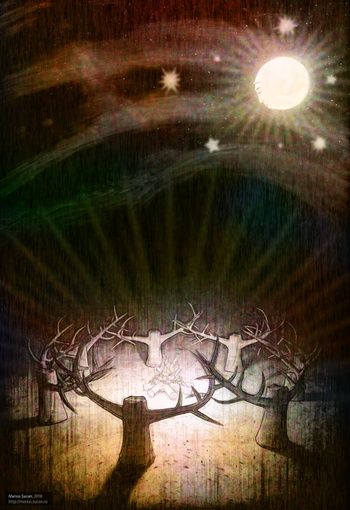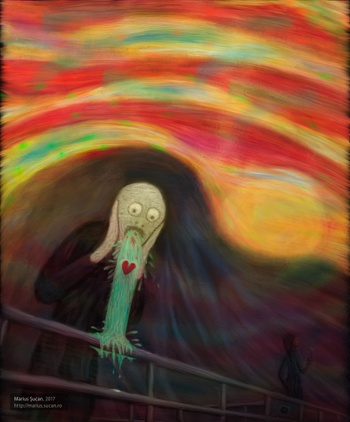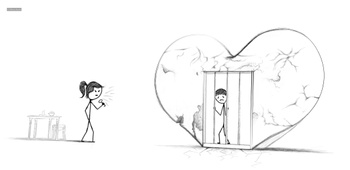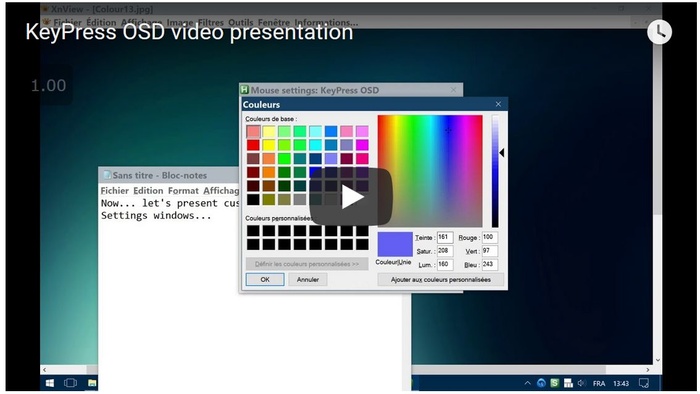Am realizat un text ca exercițiu experimental... imaginativ și conceptual. Nu este menit să ofenseze pe nimeni, și nici nu am ca scop să fac atingere la creștinism. Lectură plăcută să aveți.
În ceața învolburată a cosmosului, unde granițele timpului și spațiului se împletesc, s-a apropiat un moment de socoteală divină. Dumnezeu, cunoscut de mulți drept Yahweh, Iisus, Dumnezeul atotputernic, a decis să realizeze a doua Sa venire. De data aceasta, El nu avea să coboare ca figura miraculoasă a lui Iisus Hristos pe care omenirea a cunoscut-o cândva, ci într-o formă care purta semnele suferinței și a imperfecțiunii într-un mod aparte...
Într-un mic apartament dintr-o suburbie oarecare, în SUA, un copil s-a născut... Maria și Joseph, umili muncitori într-o fabrică, au fost binecuvântați cu un fiu pe care l-au numit Iisus. Neavând bani pentru a naște la spital, Maria l-a născut acasă. De la bun început, a fost clar că Iisus era diferit. A venit pe lume cu un picior malformat, un trup foarte firav și cu coloana vertebrală afectată. Datorită corpului său fragil, se mișca cu o mare greutate. Cu toate acestea, ochii lui scânteiau cu o lumină dintr-o altă lume, iar prezența lui emana o seninătate inefabilă.
Pe măsură ce Iisus a crescut, mulți oameni au pus la îndoială înțelepciunea lui Dumnezeu în a dărui astfel de dizabilități unui copil. Alții sugerau că sunt consecințele consumului de droguri și alcool de către mama lui, Maria. Dar cei care au petrecut timp cu Iisus nu au putut nega pacea profundă și înțelepciunea pe care le-a împărtășit-o. Cuvintele lui, deși simple, au purtat greutatea cerului, iar atingerea lui, deși slabă, a adus o mângâiere puternică nevoiașilor...
Când Iisus a ajuns la vârsta de 23 de ani, o revelație a venit asupra lui ca o furtună existențială. Într-un vis, a văzut chipul lui Dumnezeu. În acea față, El s-a recunoscut pe sine. Realizarea l-a lovit cu forța unui tsunami: el a fost a doua venire a divinului, trimis să învețe omenirea adevăratul sens al compasiunii, smereniei și puterii. El era fiul Lui. Dumnezeu întrupat în carne și oase.
Iisus nu a făcut miracole mărețe pentru a-și anunța divinitatea. În schimb, a călătorit din suburbia în care locuia în orașe și metropole, în al lui scaun cu rotile. Anunța prezența lui în diferite locații pe rețele sociale. Clipuri cu el au devenit virale, lumea afla și vorbea despre el tot mai mult. El le-a vorbit celor proscriși, dependenților de droguri, prostituatelor și bolnavilor, împărtășindu-le mesajul său de iubire și acceptare. El i-a învățat că adevărata divinitate nu constă în perfecțiune, ci în claritatea inimii și în puterea spiritului.
Într-o lume obsedată de perfecțiune, de fizic și putere, învățăturile lui Iisus au fost revoluționare. El a predicat că fiecare persoană, indiferent de starea sa fizică sau mentală, era un vas al divinului. El a subliniat că suferința nu este o pedeapsă, ci o cale către înțelepciune și empatie. Predicile sale aveau loc în cele mai improbabile locuri: suburbii, adăposturi pentru cerșetori, aziluri, penitenciare, bordeluri și mahalale. Stătea alături de cei care fuseseră respinși de societate într-o formă sau alta. Refuza să predice în biserici, spunând că sunt făcute de lupi pentru lupi.
Iisus a îndemnat lumea să îmbrățișeze tehnologiile acelor vremuri, inteligența artificială, cercetarea genetică și explorarea spațială, spunând că este de datoria omului de a desluși tainele creației prin intelect, prin știință. Sufletul și esența omului este neatinsă chiar dacă trupul este augmentat cu componente tehnologice. El vorbea adesea foarte critic despre cum capitalismul a sedus creștinismul, cum l-a transformat într-o religie predominant materialistă, coruptă, cu practici ce nu au legătură cu Dumnezeu.
Unul dintre cei mai devotați adepți ai săi a fost o tânără pe nume Miriam, care se născuse oarbă. Nu văzuse niciodată răsăritul sau chipurile celor dragi, dar vedea lumea mai clar și mai profund decât majoritatea oamenilor. Sub îndrumarea lui Iisus, Miriam a devenit o voce puternică pentru cei marginalizați, învățându-i pe alții că adevărata vedere vine din interior.
Influența crescândă a lui Iisus nu a trecut neobservată. Autoritățile religioase, care și-au construit puterea utilizând frica și mijloace de manipulare a maselor, l-au văzut ca pe o amenințare. Ei nu au putut înțelege un mesia care purta semnele imperfecțiunii, un mesia care îmbrățișează tehnologia și știința, unul care se asociază cu pariah societății. În ochii lor, divinitatea era sinonimă cu putere, măreție și perfecțiune, nicidecum cu fragilitate și handicap.
Ei au căutat să submineze mesajul lui Iisus, răspândind zvonuri și instigând frică, utilizând deep-fake-uri generate cu inteligență artificială. În ciuda eforturilor de a-l discredita, numărul oamenilor care-l urmau pe Iisus a crescut progresiv, pentru că mesajul lui a rezonat profund în rândul celor care fuseseră mult timp în suferință, marginalizați sau antagonizați.
Într-o întorsătură crudă a sorții, Iisus a fost arestat și adus în fața unui tribunal. Învățăturile sale, care amenințau ordinea stabilită în creștinism, erau considerate eretice. Procesul a fost un simulacru banal. Verdictul a fost rapid dat: crucificare. Decizia de a-l crucifica era atipică vremurilor, dar s-a procedat așa ca bătaie de joc. Liderii vremurilor, au decis să fie transmis în direct evenimentul pe toate rețelele de streaming și canale TV majore.
De îndată ce sentința a fost pronunțată, Iisus a fost brusc prins de gardieni. Scaunul lui cu rotile a fost dat brutal deoparte. Fără acesta, Iisus a rămas la mila agresorilor.
Drumul către The Stonewall Inn (New York City), cunoscut sub numele de Via Dolorosa, a început în inima orașului, și ducea pe alei și străzi înguste și aglomerate. Călătoria ar fi fost dificilă pentru orice prizonier condamnat, dar pentru Iisus, a fost o cale cu suferințe inimaginabile. Fără scaunul cu rotile, a fost forțat să se bazeze pe piciorul său slab și malformat, fiecare pas fiind o luptă împotriva durerii.
La început de Via Dolorosa, Iisus a fost pus să care în spinare o cruce din lemn masiv. Lemnul tăiat aspru i-a săpat în carne, agravând rănile crude de pe spate pricinuite de loviturile gardienilor. Povara era imensă, mult prea grea pentru trupul său firav, dar gardienii îl forțau fără milă, fără compasiune. L-au târât pe străzi și l-au lovit cu bestialitate. Pietrele ascuțite aruncate de oameni îi tăiau mâinile și genunchii. Rămâneau dâre de sânge în urma lui.
Fiecare pas era un chin imens... carnea pe trupul lui Iisus tremura din cauza eforturilor. Mulțimea era un amestec constituită din adepți de-ai lui și oameni care voiau doar să asiste la spectacol, cu fascinație morbidă. Unii îl batjocoreau și îl scuipau, în timp ce alții plângeau în tăcere, neputincioși să intervină. Întreaga călătorie a fost transformată într-un spectacol de violență și cruzime transmis în direct pentru miliarde de oameni, direct pe ecranele dispozitivelor lor.
Ajuns la The Stonewall Inn (New York City), Iisus a fost dezbrăcat de haine. Trupul său fragil și malformat era învinețit și însângerat, și acum era în văzul tuturor. Gardienii l-au așezat pe crucea ridicată, întinzându-i cu agresivitate brațele și picioarele. Iisus a atârnat între alți doi inculpați: un criminal în serie și un terorist cibernetic. Mulțimea s-a adunat dedesubt, unii continuând să-și bată joc de el, alții rugându-se și plângând. În ciuda durerii chinuitoare, Iisus i-a privit cu o plinătate de compasiune și iertare.
În timp ce atârna pe cruce, cu trupul lui firav, zdruncinat de durere, Iisus privea peste mulțime. Printre chipuri a văzut frică, ură și confuzie, dar și o licărire de speranță și iubire.
Cu ultima sa suflare, Iisus a rostit cuvinte care aveau să răsune în veșnicie: „Iartă-i, căci nu știu ce fac”. Moartea lui a fost un moment de transcendență profundă, o îmbinare a suferinței umane și a iertării divine.
Când Iisus a murit pe cruce, o tăcere profundă a cuprins întregul Stonewall Inn (New York City). Mulțimea s-a împrăștiat, lăsând doar câțiva adepți fideli care să-i îngrijească trupul. L-au coborât cu blândețe de pe cruce, cu mâinile tremurând de întristare și evlavie. Trupul zdrobit al lui Iisus a fost depus într-un mormânt.
Trei zile mai târziu, mormântul a fost găsit gol de Miriam. Iisus a înviat, nu într-un corp glorificat, perfect, ci în aceeași formă în care trăise și murise – fragil, imperfect și totuși scăldat de lumină divină. Învierea Sa a fost o mărturie a puterii eterne a duhului asupra cărnii, a iubirii asupra urii.
Iisus a continuat să se mai arate urmașilor săi, împărtășind învățături și binecuvântări finale pentru câteva zile. El a subliniat că dizabilitățile sale fizice nu au fost o piedică, ci un simbol puternic al solidarității lui Dumnezeu cu cei zdrobiți și suferinzi. El i-a îndemnat să vadă divinul în fiecare chip, să-și îmbrățișeze propriile imperfecțiuni și să găsească putere în vulnerabilitate.
Mesajul lui Iisus a transformat lumea. Adepții săi și-au răspândit învățăturile peste tot, întemeind comunități care i-au îmbrățișat pe cei marginalizați și au celebrat frumusețea imperfecțiunii umane. Viața și învierea lui au devenit un far de speranță pentru toți cei care s-au simțit nedemni sau de neiubit. Un singur miracol a realizat pe parcursul vieții lui: a reînvigorat cu adevărat creștinismul într-o cultură și societate profund secularizată, cum nimeni nu a reușit vreodată.
Cu timpul, povestea celei de-a doua veniri a lui Dumnezeu, sub forma unui Iisus cu handicap, a devenit o narațiune puternică despre răscumpărare și umanitate. A contestat însăși fundamentele normelor societății, îndemnând la o reevaluare a ceea ce înseamnă a fi creștin și a relației omului cu divinul. Și în inimile celor care au crezut, a aprins o flacără vie de compasiune, amintindu-le că divinul nu rezidă în perfecțiune, ci în capacitatea nemărginită de a iubi și de a fi iubit. Povestea aceasta este o mărturie a adevăratei naturi a divinității – o natură care transcende perfecțiunea, îmbrățișând întreaga umanitate în iubirea sa vastă și necondiționată.
Noul Creștinism aduce Bibliei o parte nouă numită Testamentul Imperfect. Aceasta este constituită din șapte cărți canonizate după 15 ani de la decesul lui Iisus. Acestea au fost certificate digital de către mama lui Iisus, Miriam și alți apostoli ai lui. Noile cărți sunt: Evanghelia Mariei, Evanghelia lui Miriam Clarvăzătoarea, E-mail-urile către Califatul Germaniei Mari, E-mail-uri către Templul Zionist al Israelului din Gaza, Perfecțiunea imperfecțiunii, Techno Deus și Omega.
